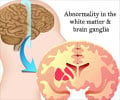Patients with refractory partial and secondarily generalized seizures had a reduction in seizures after deep brain stimulation, a recent study organized by Stanford University researchers has found.
Patients with refractory partial and secondarily generalized seizures had a reduction in seizures after deep brain stimulation, a recent study organized by Stanford University researchers has found.
This multi-center clinical trial determined that the benefits of stimulation of the anterior nuclei of thalamus for epilepsy (SANTE) persisted and by 2 years there was a 56% reduction in seizure frequency. Full findings of this study are available early online in Epilepsia, a journal published by Wiley-Blackwell on behalf of the International League Against Epilepsy.Epilepsy, a common neurological disorder, is characterized by recurrent seizures that can cause temporary loss of consciousness, convulsions, confusion or disturbances in sensations. According to the World Health Organization (WHO), epilepsy affects 50 million people worldwide. Past studies indicate that one-third of those with epilepsy do not respond adequately to antiepileptic drugs (AEDs).
"Electrical deep brain stimulation (DBS) is a promising therapy for epilepsy," said Robert Fisher, M.D., Ph.D., Director of the Epilepsy Center at Stanford University, and lead author of the SANTE study. "Our goal is to find treatments that reduce the effects of epilepsy, particularly for those who don't respond to AED therapy."
The SANTE clinical trial included 110 participants, 18-65 years of age with partial seizures occurring at least 6 times per month (not more than 10 per day), and whose seizures failed to respond to at least 3 AED treatments. After a 3-month baseline with stable AED use, DBS electrodes were implanted in the anterior nuclei of thalamus (ANT) bilaterally using a stereotactic technique. One month after implantation, participants were randomized to stimulation at 5 V or no stimulation at 0 V (control group), using 90 µs pulses, 145 pulses/s, "ON" 1 minute, and "OFF" 5 minutes in a 3-month blinded treatment phase. (month 1 to month 4). All participants then received stimulation (from month 4 to month 13) in an unblinded "open label" phase of the trial.
Results showed those in the stimulation group had a 40.4% decline in seizures compared with 14.5% decline in the control group (blinded phase), and this difference was statistically significant, provided that seizures occurring in one patient transiently triggered by the stimulation cycle were discounted. Complex partial seizures, seizures listed as "most severe" by the subject and injuries from seizures all were reduced during the blinded phase in the stimulated group. Responder rate, (the percentage of patients whose seizures were cut in half or better) did not differ in the blinded phase, but improved long-term with respect to baseline.
Long-term follow-up began at 13 months post-implantation and included 105 participants all receiving stimulation. At 13 months, 41% of patients showed a reduction in seizures; at 25 months, 56% of patients experienced a reduction. Two participants were seizure-free from months 4-13 and 14 (12.7%) were seizure-free for at least 6 months of the trial. During the trial, no participant had symptomatic hemorrhage or brain infection. Researchers noted 5 deaths, none believed to be related to implantation or stimulation. Subjects in the stimulated group more often reported subjective depression and memory impairments, usually extensions of pre-exisitng problems.
Advertisement
On March 12, 2010, an FDA advisory panel recommended approval of DBS in the anterior nucleus of thalamus as being safe and effective for patients with severe and refractory partial seizures with or without secondary generalization.
Advertisement
Source-Eurekalert
RAS















